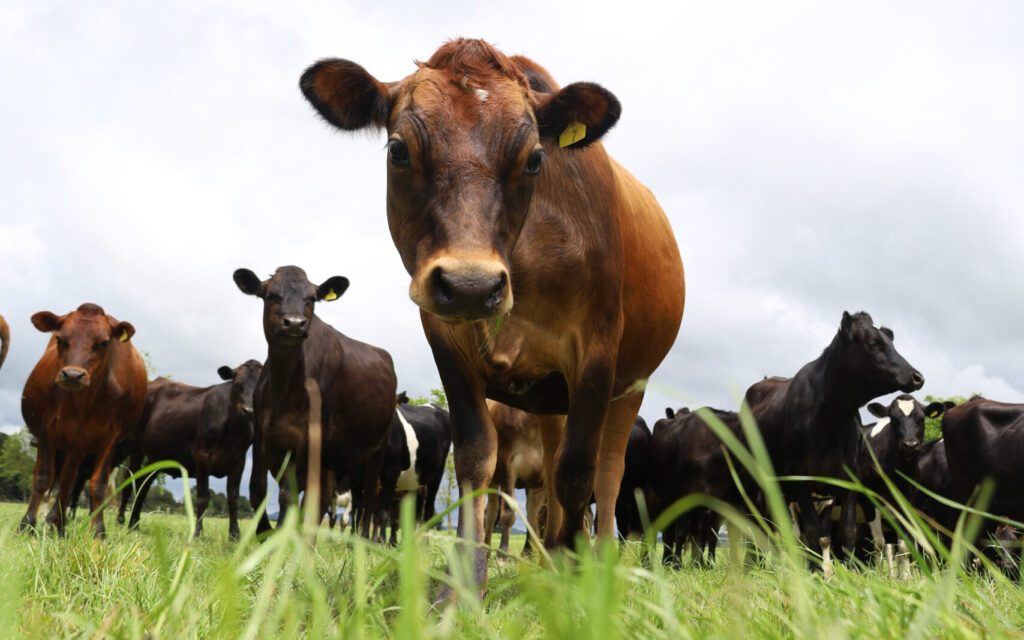LIC’s Aiden Cunningham reviews what the latest action in the beef market means for dairy producers trying to add value to their beef calves.
Good reproductive performance is the foundation of herd improvement. And it’s that foundation that has allowed Irish farmers to increasingly use sexed semen with confidence.
The use of sexed semen helps produce the best possible replacements from our top cows. It also provides the opportunity to inseminate our lowest merit cows with beef semen.
These two actions prevent us passing lower merit genetics to the next generation while, at the same time, generating higher value beef calves.
Over the past 100 years, most of the work regarding herd improvement has been focused on the dairy cow and improving dairy production. But with new tools like genomics and sexed semen, we’ve seen an acceleration of genetic gain on-farm.
The same efforts, skills and technology are now being applied in equal measure to beef genetics destined for the dairy herd.

Dairy beef initiatives are looking positive
Paul Charteris, LIC’s beef genetics product lead, is targeting bulls that provide solutions to both dairy farmers and finishers. “We’re serious about the beef genetics we use on our dairy cows. We want the best genetic merit bulls, so we’re partnering with top NZ breeders to make sure their breeding programmes are aligned with what dairy farmers and beef finishers are looking for,” he says.
Initiatives, such as the dairy progeny test, which is co-funded by LIC, are providing robust data and feedback for how well the offspring from these beef bulls perform with New Zealand crossbred cows – and the results are encouraging.
At the recent Positive Farmers Conference, Padraig French from Teagasc talked about dairy to beef in an Irish context. After analysing last year’s calf sales through Cork Marts, he clearly showed that breed and age of dairy bull calves had a negligible impact on price.
Weight was the biggest factor when it came to price paid, with every additional 1kg adding approximately €5 of value. Up until now, beef farmers have had to rely on breed as a proxy for potential value. Now, with tools, such as Commercial Beef Value (CBV) and genomically verified sires for dairy and beef, farmers have more accurate data and better predictors of future value at their fingertips.
While dairy farmers are experts in picking the ideal team of dairy bulls for their herds, they are now being asked to become experts in picking beef bulls for the same herds.
Long-held beliefs about breeds or faith in stock bulls have been challenged and are having to be amended, accounting for the steady stream of data emerging over the past few years.

Whether this information is coming from the dairy beef progeny testing in NZ, or the work that’s happening at Tully in Ireland, the data is clear. The bull itself matters more than the breed.
While we are still using and selecting easy calving and short gestation beef bulls, we also need to factor in the farmers that are buying and finishing these cattle. We need to look at the traits that dairy farmers don’t necessarily see, but that are still very important.
These include, for example, growth rates, carcass weights and weights as both a yearling and at two years of age.
If we want to build trust between the farmers buying and finishing our stock, we, as dairy farmers breeding the stock, need to select beef bulls that consistently deliver the desired results.
We must move away from stock bulls as soon as possible because, much like the best dairy bulls are found in an AI straw, the same rings true for beef bulls.
While using stock bulls is a convenient choice especially at the end of AI, they often have very little information behind them and tend to deliver inconsistent results.
When finishers are not getting a consistent product, they’ll end up leaving the market. The onus is on us, as dairy farmers, to produce a consistent product.
The good news here is that there’s been a large amount of work and resource put into dairy beef.
LIC has partnered with the likes of the Rissington Cattle Company in the Hawke’s Bay, who’ve been working on breeding elite beef bulls since the 1980s, as well as Kakahu Charolais, both of which have proven to be excellent options for dairy farmers. Both mark calves and produce excellent weights at 200 and 400 days respectively, as well as good carcass weights. LIC also works with Shrimpton’s Hill Herefords, a proven short gestation option.

No one breed of beef bull is the best. What is important is to use the right team of beef bulls. Bulls with a shorter gestation are best used at the end of the breeding period. Those boasting lower birth weights and easier calving are most effective when paired with younger animals. Beef bulls with superior carcass traits are most effectively utilised with older cows.
Using sexed dairy plus sexed beef straws is a win-win for both dairy and beef farmers.
Dairy farmers can increase genetic gain and improve the value of beef animals, without having to change the type of cow they are milking. At the same time, beef farmers get a higher quality calf that grows faster and finishes at a higher carcass weight.
Talk to your LIC Breeding Advisor about beef options for your dairy herd.



